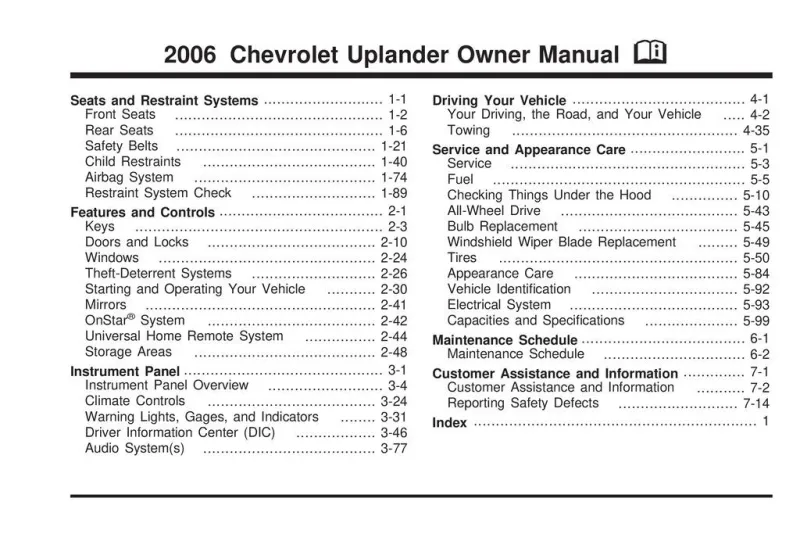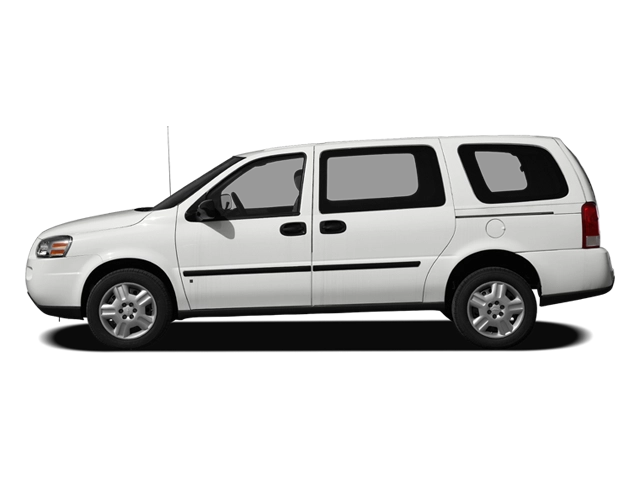2006 Chevrolet Uplander Owner's Manual

Table of Contents
2006 Chevrolet Uplander Overview
Introduction
The 2006 Chevrolet Uplander is a versatile and family-friendly minivan designed to cater to the needs of busy households while delivering comfort, performance, and utility. With its spacious interior, ample cargo capacity, and modern amenities, the Uplander stands out as a practical choice for those seeking a reliable family vehicle. Whether you're navigating city streets or embarking on long road trips, the Uplander aims to provide a smooth and enjoyable driving experience.
Powertrains
The 2006 Uplander is equipped with a robust 3.5-liter V6 engine that produces a commendable 200 horsepower and 220 lb-ft of torque. This engine is paired with a four-speed automatic transmission, ensuring seamless gear shifts and responsive acceleration. With available front-wheel drive, the Uplander delivers solid performance and competitive fuel efficiency, making it suitable for both daily commutes and weekend adventures.
Trims
Features
The 2006 Uplander is well-equipped with family-oriented features, including available rear-seat entertainment systems, spacious third-row seating, and a generous number of storage compartments throughout the cabin. Safety features such as front-side airbags, antilock brakes, and traction control further enhance its appeal, ensuring peace of mind for families.
Owner's Manual
The owner's manual for the 2006 Chevrolet Uplander serves as an invaluable resource for drivers, detailing maintenance schedules, troubleshooting tips, and operating instructions for all features. It provides comprehensive guidance to ensure owners can maximize the performance and longevity of their vehicle while enjoying all the conveniences the Uplander has to offer.
User manual download
The Chevrolet Uplander owner manual for the 2006 model year is to be found in PDF downloadable format on this page. The owner manual for the model year 2006 is free and in English, but the repair manuals are usually not easy to get and may cost more.
Manual Questions
Fill the form below and someone will help you!

